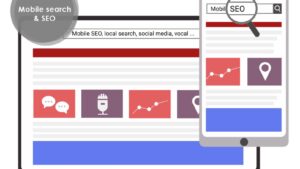What is Targeting and How Does it Work?

Targeting is one of many digital marketing techniques that allow you to select a target audience based on certain criteria (age, location, gender, etc.) across all Internet users. Its goal is to promote your product in a way that gets you the best impact from your advertising. It also allows you to use your marketing budget wisely so that you get the most out of your advertising campaigns.
We can see targeting being used by search engines, contextual advertising, banners, and on social media. In each of these areas, you can define the relevant parameters that will then be used to select the target audience based on their interests.
Types of Targeting
Depending on the type of selection criteria you choose, there are several types of targeting:
- Thematic Targeting: display of advertising messages on a particular topic.
- Contextual Targeting: display of messages based on users’ interests.
- Geo-Targeting: displaying ads based on the geographic location of your target audience.
- Behavioral Targeting: this is one of the most promising types of targeting. The core of behavioral targeting is to implement a mechanism to collect information about users’ actions (travel itineraries, favorite places to visit, shopping behavior, etc.).
- Socio-Demographic Targeting: this is targeting based on age, gender, income, social status, etc.
Creating a Targeting Strategy
The first step in a targeting strategy is the audience analysis that takes place during the information gathering process. At this stage of targeting, the digital marketer tracks consumer’s preferences, actions they take online, and users’ interests, etc.
Through the information analysis stage, you can draw conclusions about your target audience’s preferences, tastes, communication methods, and buying behavior from the large amount of data collected from users. Therefore, you should focus your marketing efforts on the people who are most likely to interact with your brand based on the information you gathered during your analysis.
Then, in the next step, you can strategically present your product or service to your target audience. And once you have identified your audience, you need to create an advertising campaign.
What Are the Differences Between Segmentation, Targeting, and Positioning?
These three models play a significant part in promoting a new product. An effective digital marketing strategy involves using all three, so each one of them needs to be taken into account.
Segmentation is the first step. It involves dividing your entire audience into smaller groups with similar needs and interests. Without proper segmentation, you will not be able to move successfully to the next step.
Now that your audience is segmented, you can move on to the next step, targeting. You can develop strategies and tactics to help you communicate more effectively with Internet users. Analyze each segment, create a buyer persona, and then work to create the best promotional offers for each group.
Positioning is the last step. This is very important because your place in the market depends on its success. You must convince potential customers that your brand is the best choice. You also need to create an image of your company in the minds of your customers. Explain to them the benefits of using your product and try to meet their needs.
The Characteristics of Targeted Advertising
Each digital marketing tool has its own particularities. So, knowing the pros and cons will help you manage and optimize your advertising campaigns more effectively.
The Main Benefits of Targeted Advertising
With a large number of adjustment options, you can create an accurate picture of your potential customer. Then, this gives you access to the interested audience, which is likely to respond to the offer.
Segmentation allows you to make your ads more effective by personalizing them. Different formats are available for targeted advertising (an image or video, a title, and a description). For each group, you can create a relevant campaign that directly addresses the user’s problem. Thus, this allows the ad to stand out from the rest of the content.
Testing is the key to successful advertising. Advertising statistics are instantly displayed on the platform you are using, so you can see which offers or audiences are performing best. You can then adjust your campaign settings to improve performance by optimizing impressions and budgets.
The Drawbacks of Targeted Advertising
Despite its many benefits, ad targeting also comes with disadvantages that must be considered when setting it up.
One of them is the need to generate demand, as people use social networks to talk and have fun, not to make purchases. However, users are still comfortable enough to order and contact brands via Instagram or Facebook. Therefore, with dynamic designs and relevant offers, even a reluctant audience can be motivated.
You should keep in mind that every website has its own moderation rules; half of them are a result of legislation and half of them are a result of company policy. Checking ads before they are launched helps protect visitors from poor quality or banned items, which in turn creates more trust for the remaining ads.
The final disadvantage of targeted advertising is audience exhaustion due to a limited number of website users. Once an ad is shown to most of the selected target audience, statistics start to drop. If you notice that your ad’s performance is decreasing, you might need to improve its design to catch customers’ attention or target a different audience.
Nevertheless, targeting remains one of the most effective engagement methods. If you want to increase your sales and brand awareness, this is a tool you can’t do without.






